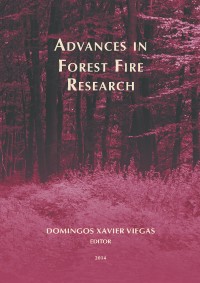Please use this identifier to cite or link to this item:
https://hdl.handle.net/10316.2/34338| Title: | Mapping of forest habitats vulnerable to fires using Corine Land Cover database and digital terrain model | Authors: | Woźniak, Edyta Kwiatkowski, Mirosław Kołakowski, Bartłomiej |
Keywords: | fire detection;Corine Land Cover (CLC);forest habitat | Issue Date: | 2014 | Publisher: | Imprensa da Universidade de Coimbra | Journal: | http://hdl.handle.net/10316.2/34013 | Abstract: | An appropriate system of fire detection and proper preparation of the forested areas for emergency and fire extinguishing activities have a significant impact on the magnitude of losses caused by forest fires. The basis of the forest fire protection planning is the forest categorisation in the context of fire risk, which is performed on the basis of the percentage of area covered by the most vulnerable habitats: dry coniferous, fresh coniferous, fresh mixed coniferous, wet coniferous, wet mixed coniferous and riparian forest. Maps of forest habitat are available for the State Forests however for private forests this information does not exist, so the proper categorisation of fire risk in these forests is very difficult and costly. The object of the study is to develop a method for the estimation of the area cover of the above-mentioned forest habitats using open source data Corine Land Cover (CLC) database and SRTM - Digital Terrain Model in order to fill the information gaps for the private forests. Employing GIS environment the analysis of the correlation between CLC land cover classes and specific forest habitat was performed. Then, the terrain characteristics such as curvature and slope were correlated with habitat humidity. Also, the shape analysis of units was carried out. On the basis of these three parameters was estimated the areas covered by fire vulnerable habitats for forest inspectorates in central and north-west Poland where the state forests constitute 98% of the area so the ground verification data was accessible for almost the entire terrain. The overall agreement between obtained and reference maps is 89%, and the error of the estimation of the specific fire vulnerable habitats is lower than 20%. The proposed method is relatively fast and low-cost and may be used for fire risk categorisation of the forested areas where the ground verification information is not available. | URI: | https://hdl.handle.net/10316.2/34338 | ISBN: | 978-989-26-0884-6 (PDF) | DOI: | 10.14195/978-989-26-0884-6_94 | Rights: | open access |
| Appears in Collections: | Advances in forest fire research |
Files in This Item:
| File | Description | Size | Format | |
|---|---|---|---|---|
| 978-989-26-0884-6_94.pdf | 1.9 MB | Adobe PDF |  |
Items in DSpace are protected by copyright, with all rights reserved, unless otherwise indicated.
